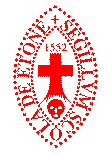King Edward VI College, Nuneaton
 |
|
| Motto | The Sixth Form Specialist ....Nurturing Talent, Achieving Excellence |
|---|---|
| Established | 1552 |
| Type | Sixth Form College |
| Principal | Uly Lyons |
| Founder | King Edward VI |
| Location |
King Edward Road Nuneaton Warwickshire CV11 4BE England Coordinates: 52°31′19″N 1°27′42″W / 52.521835°N 1.461782°W |
| Local authority | Warwickshire |
| DfE number | ???/8600 |
| DfE URN | 130840 Tables |
| Ofsted | Reports |
| Students | 1,100 (approx.) |
| Gender | Co-educational |
| Ages | 16–19 |
| Former name | King Edward VI Grammar School, Nuneaton |
| Website | King Ed Nuneaton |
King Edward VI College is a sixth form college located in Nuneaton, England, in Warwickshire. Currently, it teaches subjects in preparation for AS and A-level Examinations, for students generally aged sixteen to eighteen. The college presently accommodates approximately 1100 students from Warwickshire, West Midlands and neighbouring counties.
King Edward VI Grammar School came into being on 11 May 1552 as a grammar school, following the grant of a royal charter by King Edward VI. The school was originally a fee paying school, although the county council provided some scholarships, and became non-fee paying as a result of the education act of 1944. The voluntary aided school had around 400 boys in the 1960s.
In 1974 the grammar school closed and was re-established as King Edward VI College.
The oldest surviving school building located in the grounds of the St. Nicholas Church dates from 1595, was rebuilt in 1696 and was used as a school until 1880. In 1880, the grammar school was relocated to the current site on King Edward Road, the other side of the church yard. The new building was built in a Tudor style by the architect C.C. Rolfe. The college was frequently extended during the 20th century to accommodate growing numbers of students. The Arnold Building, a new building opposite the main college site, was completed in 1994. In 2006, another small building was constructed next to the Arnold Building to hold the history department.
In recent years, the college has expanded its site with a new Study Centre, a specifically designed modern Art Block, Law Classrooms, Physics Labs, a re-developed library and Student Refectory.
A codified constitution was created in 2007 which made provisions for student representation in college affairs. It identified two institutions responsible for representing the students of the college; the 'College Council' which consists of representatives from each tutor group in the college and the 'Student Executive Committee', which consists of six elected positions:
...
Wikipedia
